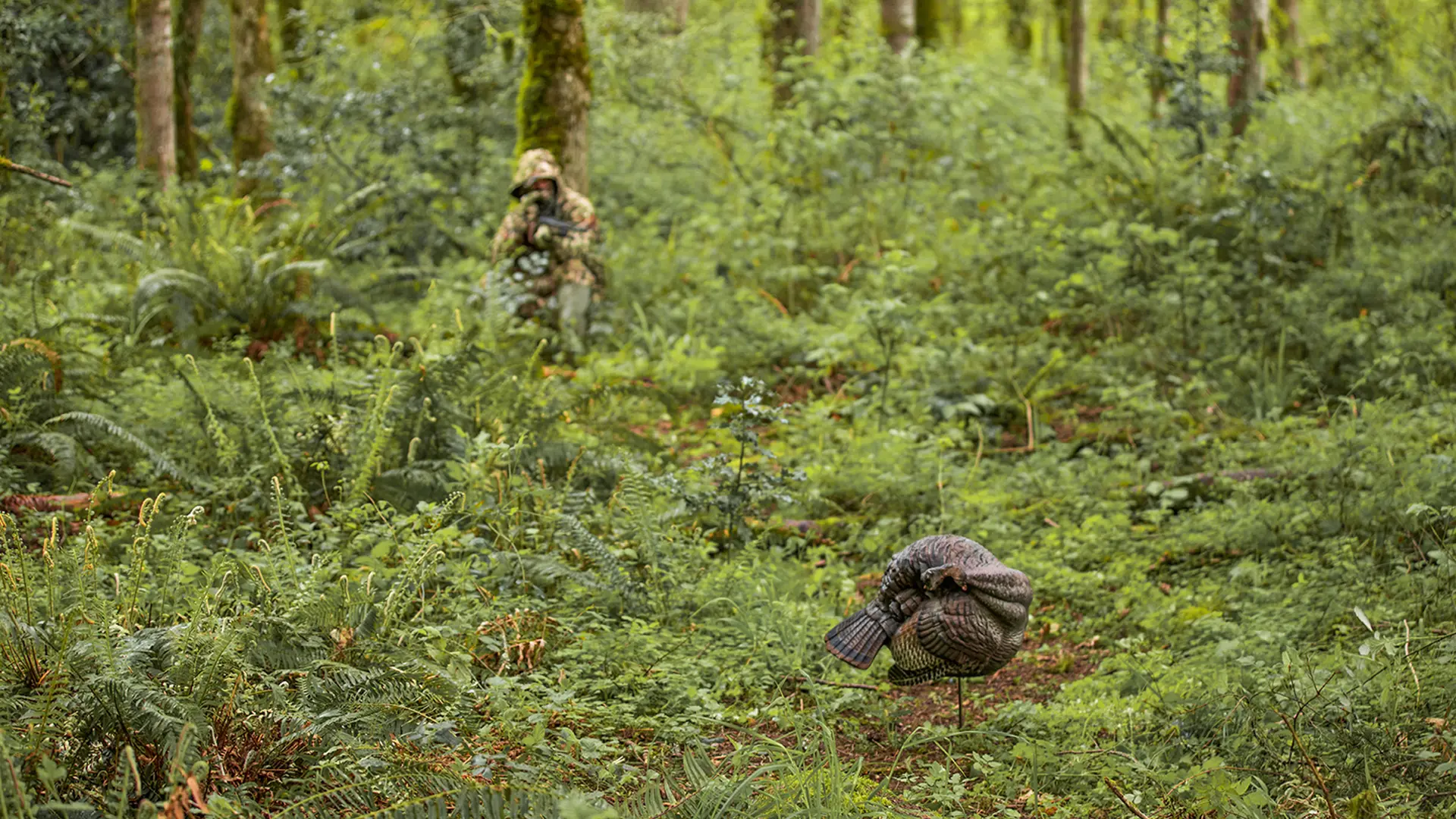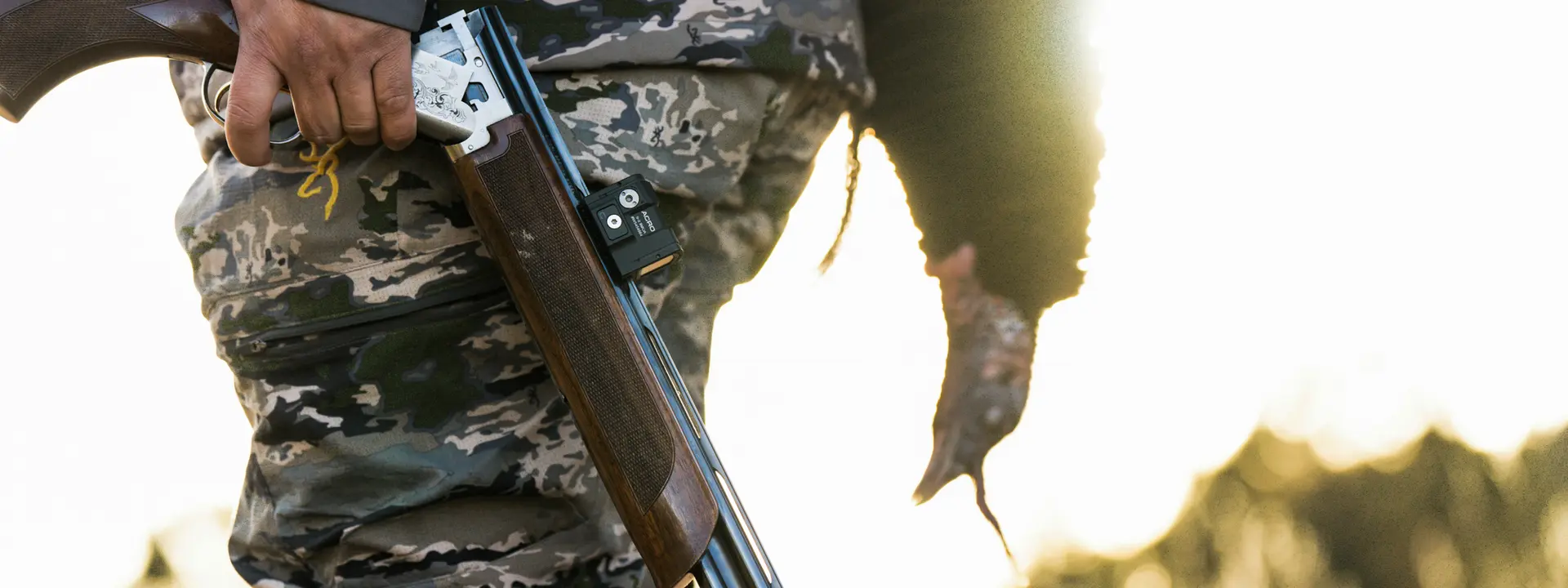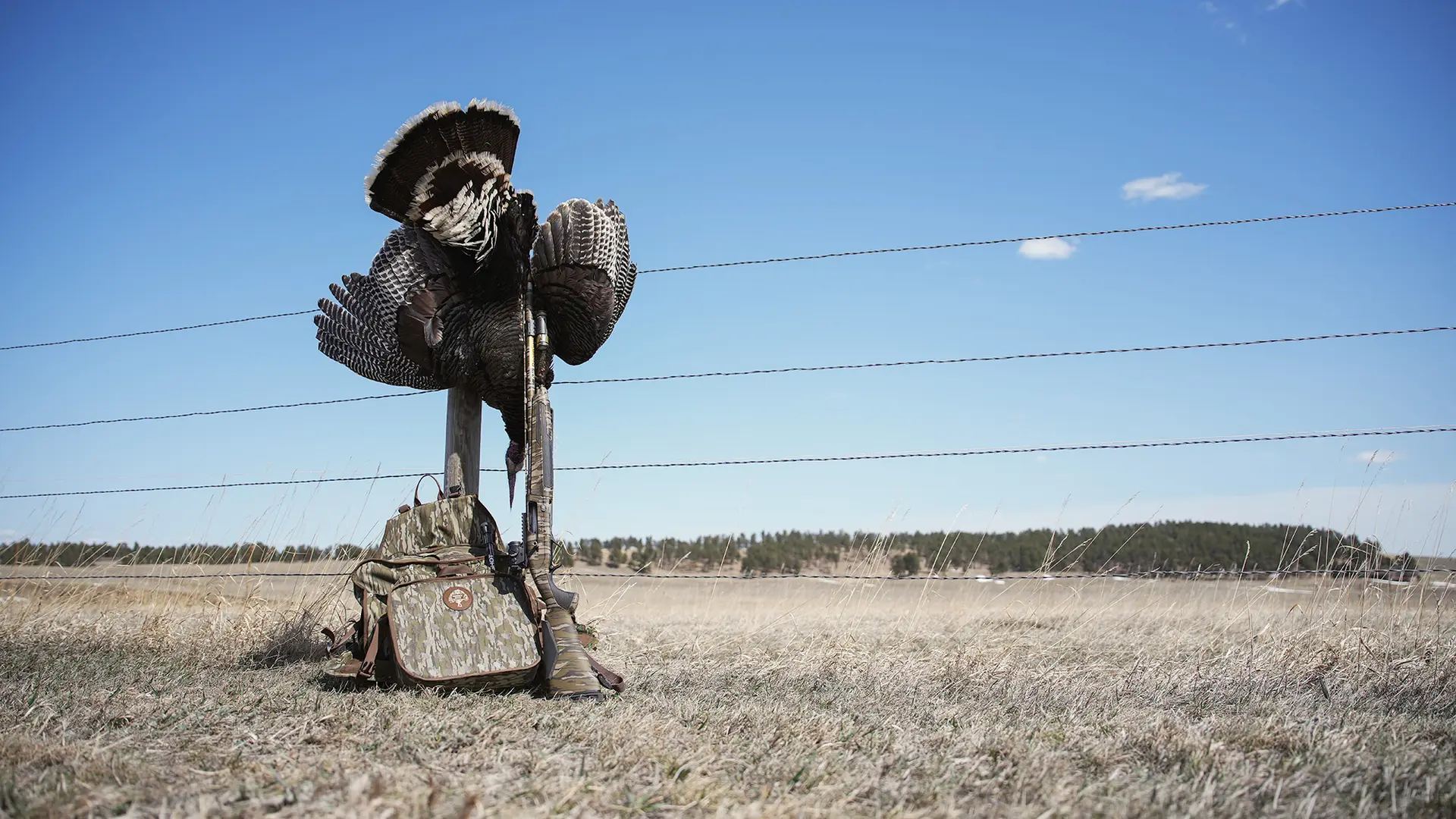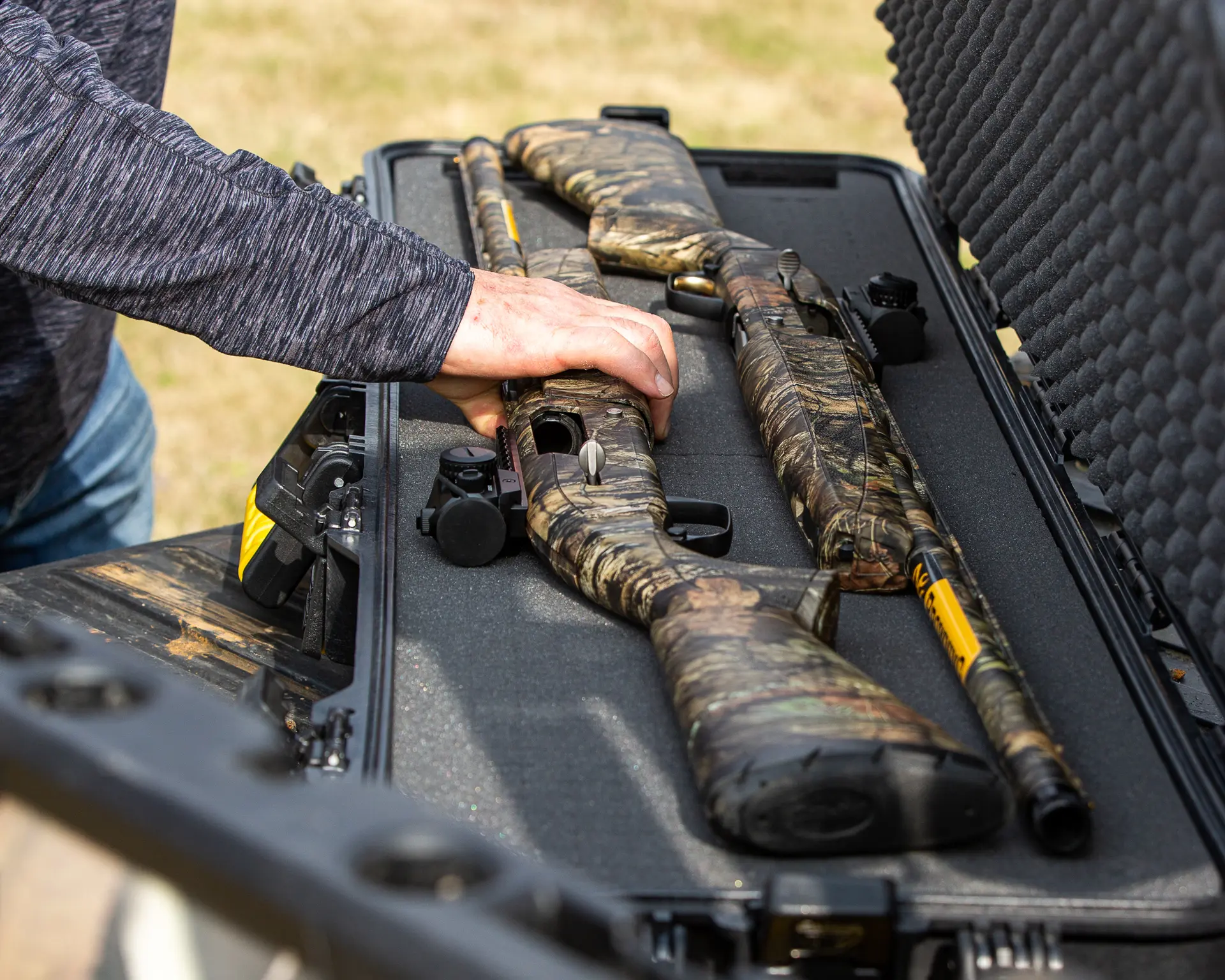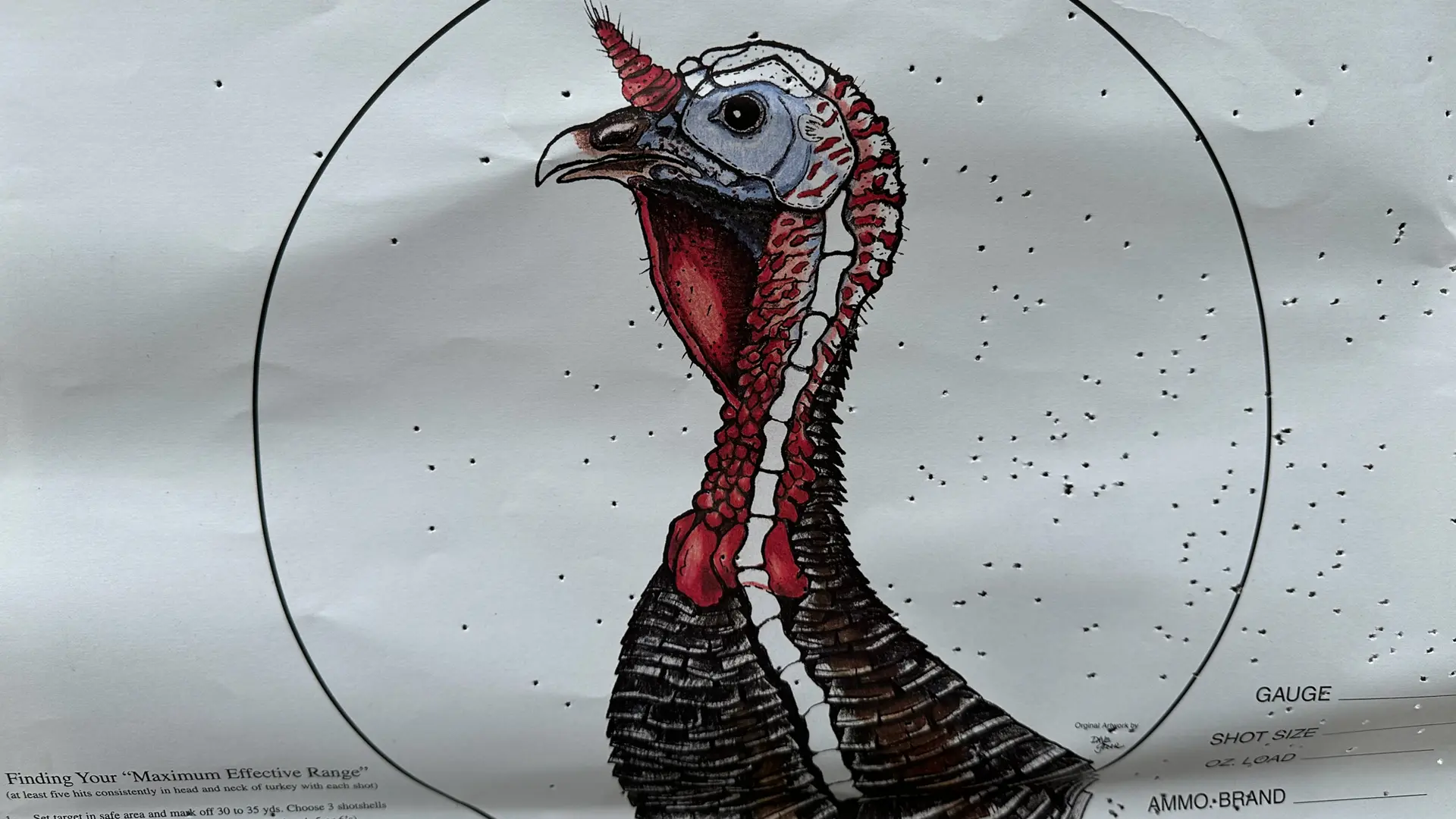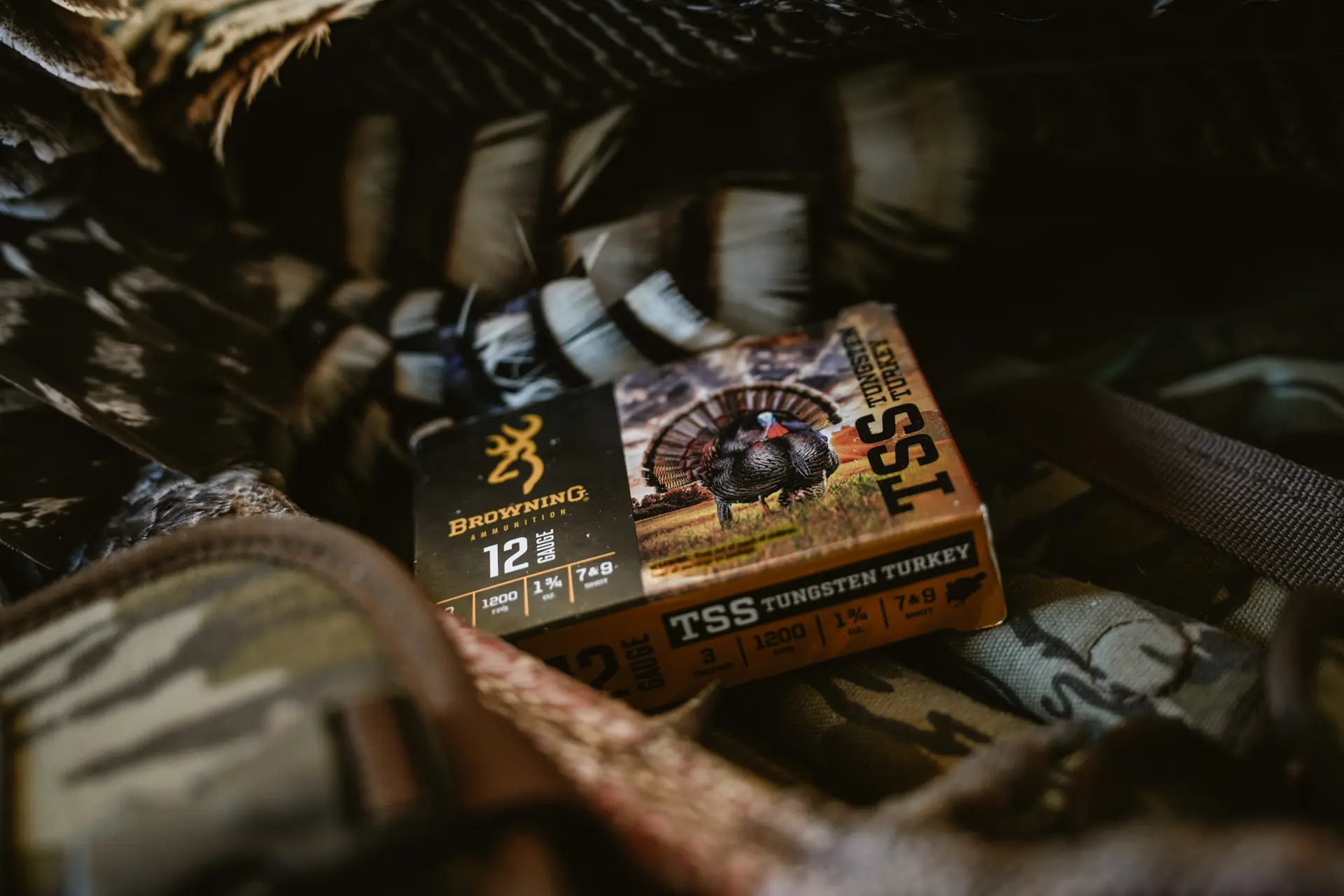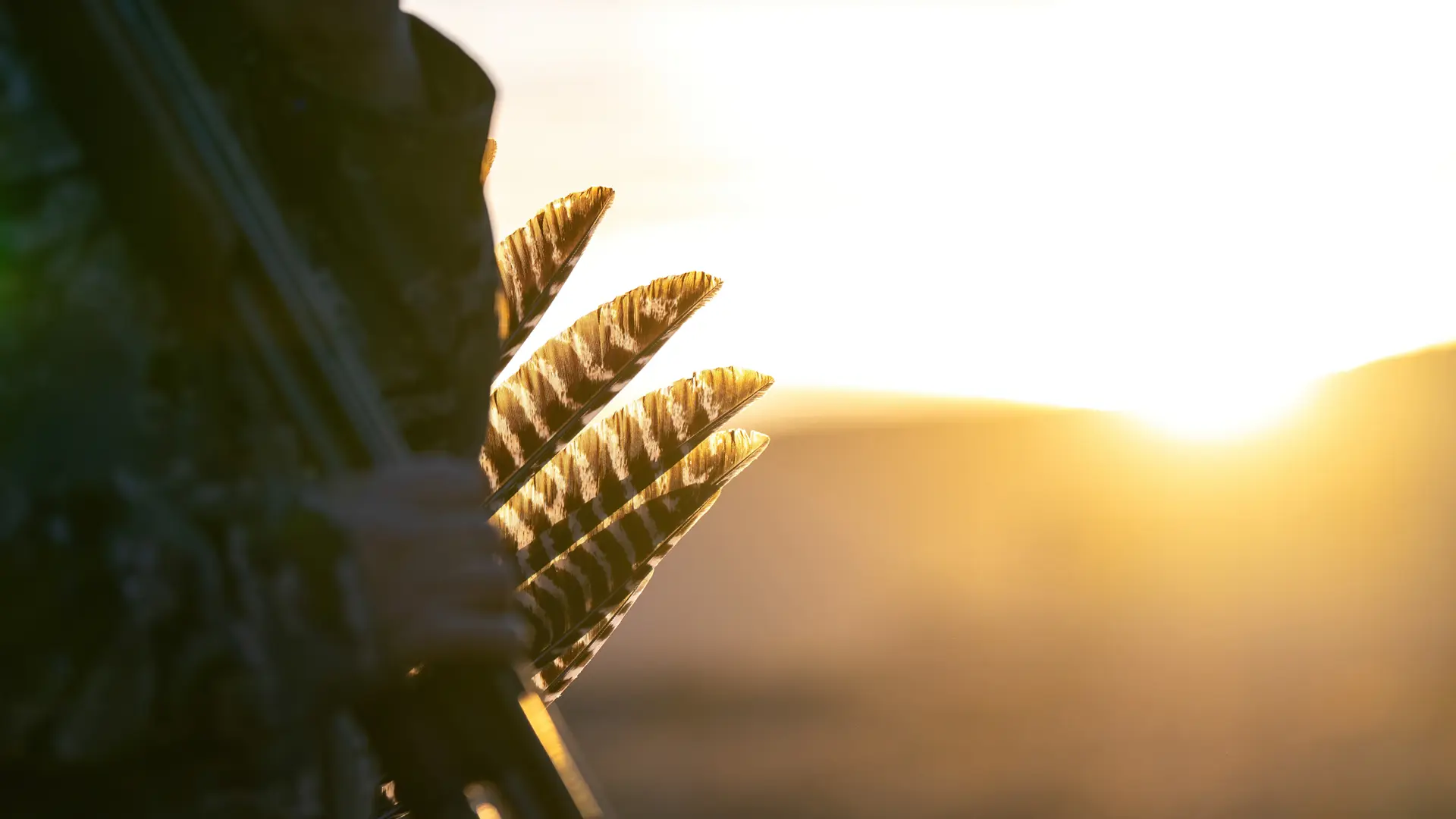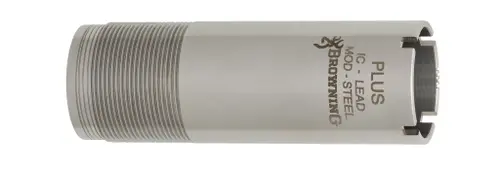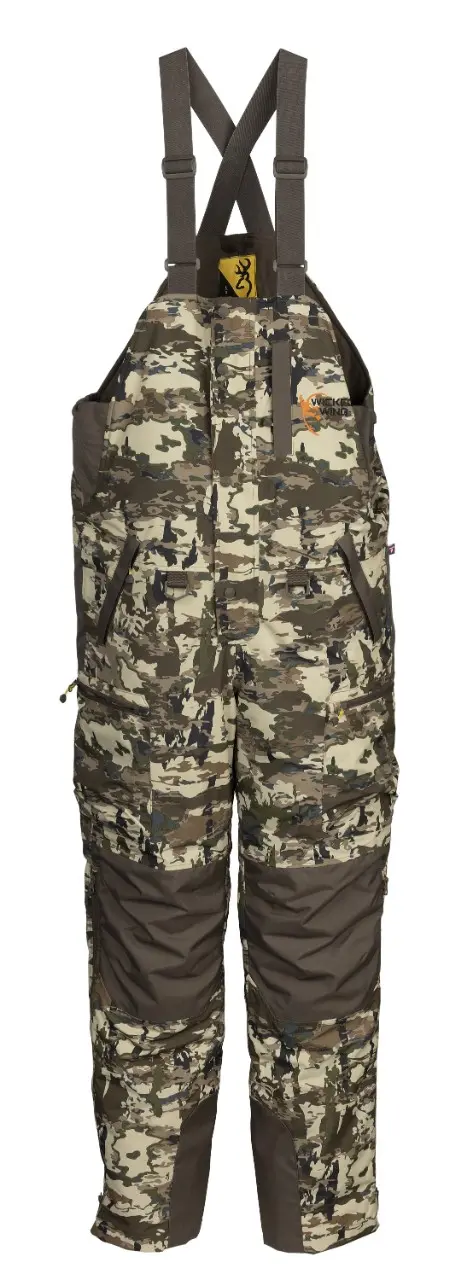Prepare Now For Springtime Turkeys
Prepare Now For Springtime Turkeys
Published on March 14th 2024
Big Timber Toms – Scott Haugen
Big Timber Toms – Scott Haugen
For me, the spring turkey season is a three-part process.
First comes the scouting. I scout year-round for turkeys but get serious in February and March. This is when I locate and watch the eventual breakup of winter flocks. I also note where toms disperse as their bachelor flocks dissolve.
Sometimes, toms stay in the same place where they spent the winter. Other times, they follow a hen 15 miles or more to her nesting site. Come opening day, I want to have multiple places to hunt, and the more toms I have located, the better.
Second, comes gear preparation. I hunt a lot in the Cascades and Coast Range of the Pacific Northwest. I cover a lot of ground during the season, even in a single day, so being mobile is critical. Often, I don’t wear a turkey vest. I take a few diaphragm calls, load my gun with three shells, and usually take just one turkey decoy. Sometimes, I don’t use a decoy. If I’m planning on being afield all day, I’ll take a small pack with food and water.
My shots are close because I’m hunting in dense habitats and targeting turkeys on deer and elk trails or in tiny openings in the forest. For these hunts, I turn to sub-gauges. I’ve taken many turkeys over the years with the Browning Silver Field 20 gauge, my favorite turkey shotgun.
I’ve tested countless loads over my 38 years of turkey hunting and Browning Tungsten Super Shot (TSS) is my preferred turkey load. Loaded in size #7-1/2 or #9, the shot gives a high pellet count. Combine this with the high density of tungsten, and it’s the perfect load for a head shot on a tough turkey.
I shoot Browning’s factory full choke with the TSS loads in my Silver 20 gauge. I pattern it at 20 yards and 10 yards, so I know exactly how it performs at close range. Most of my shots at turkeys in the forest come between 12 and 17 yards, and that’s intentional due to decoy placement and shot pattern performance.
The third and final step is the actual hunt. Because I’m hunting dense habitats, I set decoys on game trails to pull birds past me. I rarely hunt from a ground blind as there are plenty of fat Douglas firs to sit against.
I like a single hen decoy all season long. Any full-body hen decoy will work, so don’t overthink it. I like facing the decoy down the trail, away from where I anticipate a tom will approach. This position encourages the tom to hurry and catch up to the hen, usually stepping in front of it where it breaks into a strut. That’s where the shot will come.
On windy days, I rarely use a decoy. This is because the ferns and grass are constantly in motion, and when a tom approaches, it’ll keep searching for the hen. If it sees a decoy, a tom might stop and try to get the hen to come to him. The wind puts turkeys on edge. The longer a tom keeps searching, the greater the shot opportunity becomes as it gets closer to you.
I move and call a lot on windy days. Focus hunting the leeward side of hills and mountains, as turkeys often head there for relief. I call loud and often with the wind, so the sounds travel. While turkeys have eyesight equivalent to 8-power binoculars, fortunately, they can’t smell us. For this reason, hunting with the wind is productive. If it’s a stiff wind, you likely won’t hear an approaching tom gobble, so be ready once calling commences.
Since toms could be nearby in the timber, call lightly. Gradually offer louder yelps to penetrate the forest. Once a tom gobbles back, soften the yelps and add purrs to create the illusion that all is safe. Timber toms are warier than when in fields because they can’t see what’s happening; they only hear it.
Rain and high predator populations will often force turkeys into the timber. Always keep an eye out for predator sign. I run trail cameras all turkey season to watch turkeys, keep track of new toms that move in, and monitor predators. This information will dictate when and how I hunt.
Observe throughout the season as conditions, turkey behaviors, and bird numbers constantly change. The more prepared you are, the better the odds of filling tags.
Open Country Toms – Jace Bauserman
Open Country Toms – Jace Bauserman
The doldrums of winter are lifting. Days are getting longer, and rays of sunshine are replacing the ice and snow.
On March 1, I followed my year-in and year-out tradition. At 5:50 a.m., I plopped my butt on a slight rise overlooking a dense section of the Colorado River bottom. The conditions were perfect. The wind was still, and the temperatures were in the low 40s.
It didn’t take long to hear what I’d waited almost a year for. An owl hooted, and before the grave sound could echo through the leafless cottonwoods, the king of spring hammered back.
A smile spread across my face. For the next fifteen minutes, I listened to a duo of boy birds go back and forth. Occasionally, a couple of hens piped up. Then, I heard heavy wing beats, and all went quiet.
I love spring, and chasing springtime noisemakers is my passion. Every year, I find ways to pursue longbeards in as many states as possible. While calling, decoys and in-the-field decision making are essential, what you do between now and your state’s opener will dictate whether you come out of the springtime woods with spurs over your shoulder and fan bobbing behind your head.
Match Your Shotgun to the Landscape
Match Your Shotgun to the Landscape
I’m all about the sub-gauge craze and effectively used my trusty 20- and 28-gauge models on turkeys. However, as a western hunter who spends much of his spring hunting turkeys in open farm fields, cattle pastures, and massive prairie sage flats, most often, I opt for a 12-gauge semi-automatic with a full choke (more to come on this) loaded with top-tier ammo.
Of course, I’ve had times, even when hunting super open country, where a tom or three have charged into my less-than-25-yards-away decoys. However, when hunting open country, I want a shotgun/choke/ammo combo that will reach out when birds don’t read the script. If much of your turkey hunting happens in open to semi-open terrain, I recommend slinging a 12-gauge shooter over your shoulder. I also recommend a 12-gauge when hunting pressured public land birds.
The Maxus II
The Maxus II
My go-to turkey companion is Browning's Maxus II Camo. Yes, I realize the shotgun is known for being a waterfowl wonder, but I promise, it is as good at jellying the head of a springtime tom as any shotgun I’ve ever used.
While I plan to anchor some 2024 birds with Browning's Maxus II All-Purpose Hunter, I’ve been whacking and stacking toms with the Maxus II Camo for the past few years. I applaud the gun’s slim build. The narrow forearm feels excellent in hand, and the rubber over-molding on the stock and forearm boosts your grip in adverse conditions. The SoftFlex cheek pad is comfortable and ensures perfect eye-to-barrel rib alignment, and the bright front fiber optic means accuracy no matter the lighting conditions.
At seven pounds, the shotgun carries well, and Browning’s Power Drive Gas System cycles 2-3/4-, 3-, and 3-1/2-inch shotshells flawlessly. And being a fan of the range and devastation of 3-1/2-inch tom hammers like Winchester Long Beard XR #5s, I appreciate the Inflex II Recoil Pad’s ability to cut shoulder abuse.
Pattern Your Shotgun & Make Game Time Shots
Pattern Your Shotgun & Make Game Time Shots
I’ve tested many custom turkey chokes. Some have proven worth their salt. Others, well, not so much. Two years ago, I parted ways with all my custom turkey chokes.
Why?
The first longbeard I shot with my Maxus II Camo was on public dirt late in the season. The bird kept the 65-yard barrier between us intact. With my shotgun on a pair of BOG shooting sticks, I settled the red fiber-optic bead and squeezed. The tom flopped three times, and that was it.
Taking this shot wasn’t a risk. I’d spent two weeks testing different loads through my Maxus II Camo fitted with Browning’s extended Invector-Plus Full choke tube. Practice shooting off my butt from a pair of shooting sticks told me where to settle my bead. I knew the pattern would blanket the bird’s head if I did my part.
It’s essential to spend the next few weeks patterning different loads. Learning what choke/load combination your turkey killer likes best will lead to more can’t stop the flop moments.
I recommend using targets with a turkey head and creating game-time shooting situations when patterning. Don’t pattern your turkey shotgun off a bench. You won’t have a bench in the field. I hunt flat on my butt with my shotgun propped on my knees or flat on my butt with my shotgun on a set of shooting sticks, and I practice the same way.
I pattern my Maxus II at 30, 50, and 70 yards. After patterning, I re-pattern the shotgun at the exact distances but shoot at odd angles. Things aren’t always perfect in the turkey woods. Simulate game-time shooting and you’ll bag more toms. Sometimes, a sneak is required, so practice shooting prone, too.
Scout More & Hunt Less
Scout More & Hunt Less
Hands-on scouting isn’t always possible. As I mentioned, I go on multiple out-of-state turkey hunts each year. However, it is possible to scout your home state’s woods, and the more time you spend glassing, listening, and looking for turkey sign, the better your chances of a trigger squeeze on opening day.
My scouting routine goes as follows:
- Glass from a distance where birds fly down from their morning roost.
- Make notes on their fly-down location on my digital mapping app.
- Watch where the birds move to after flying down. Most often, especially during the early season, toms follow hens to a nearby food source.
- Learn through boots-on-the-ground scouting and hanging trail cameras (where legal) where midday loafing and strutting zones are.
- Mark everything you learn on your digital hunting app.
- Discover routes turkeys use to move from agriculture fields, pastures, etc., to their roosts.
Turkeys develop routines. If you learn those routines, you increase your chances of having drumsticks for dinner.
Final Thoughts
Final Thoughts
Yes, there’s more to consistent springtime success than choosing the correct gauge for the terrain, the right load, patterning, and scouting. There is also calling, decoys, setups, and more.
However, if you know your shotgun will deliver a smattering of pellets accurately and understand the haunts and habits of area springtime birds, chances are excellent that you’ll punch your tag.



